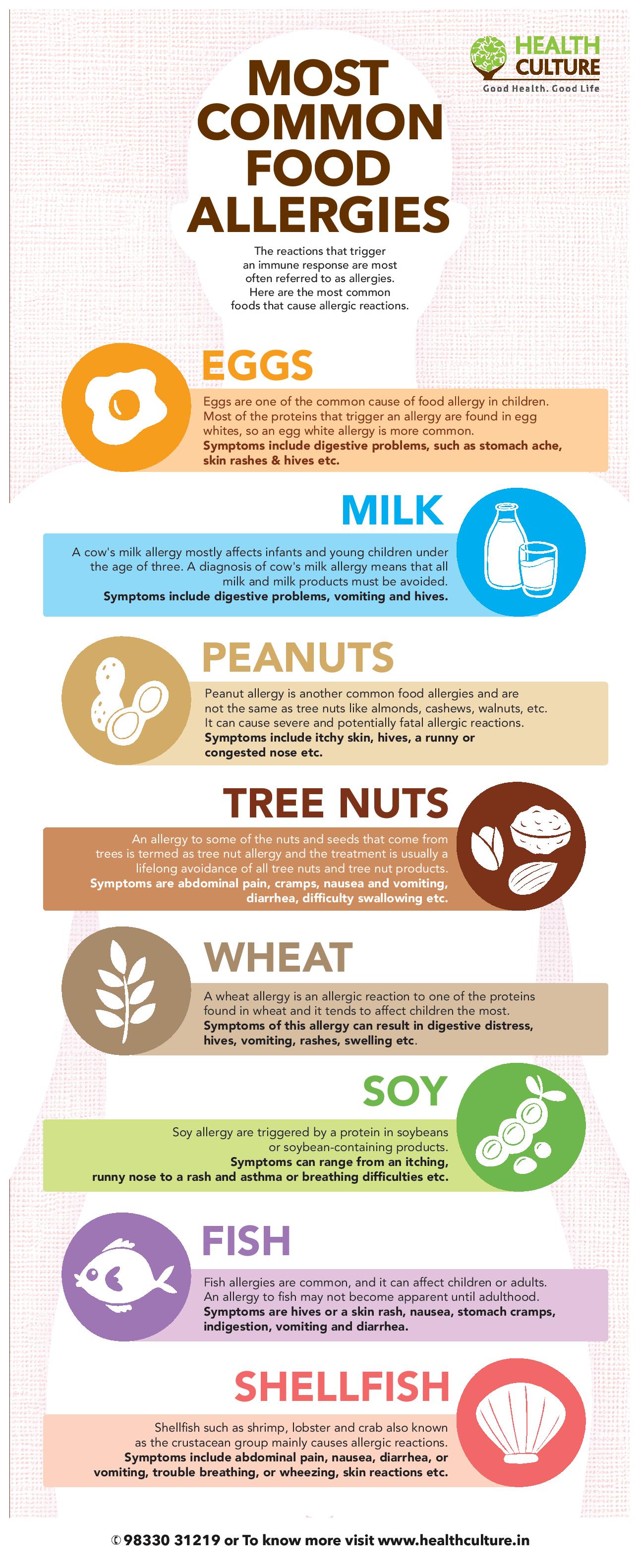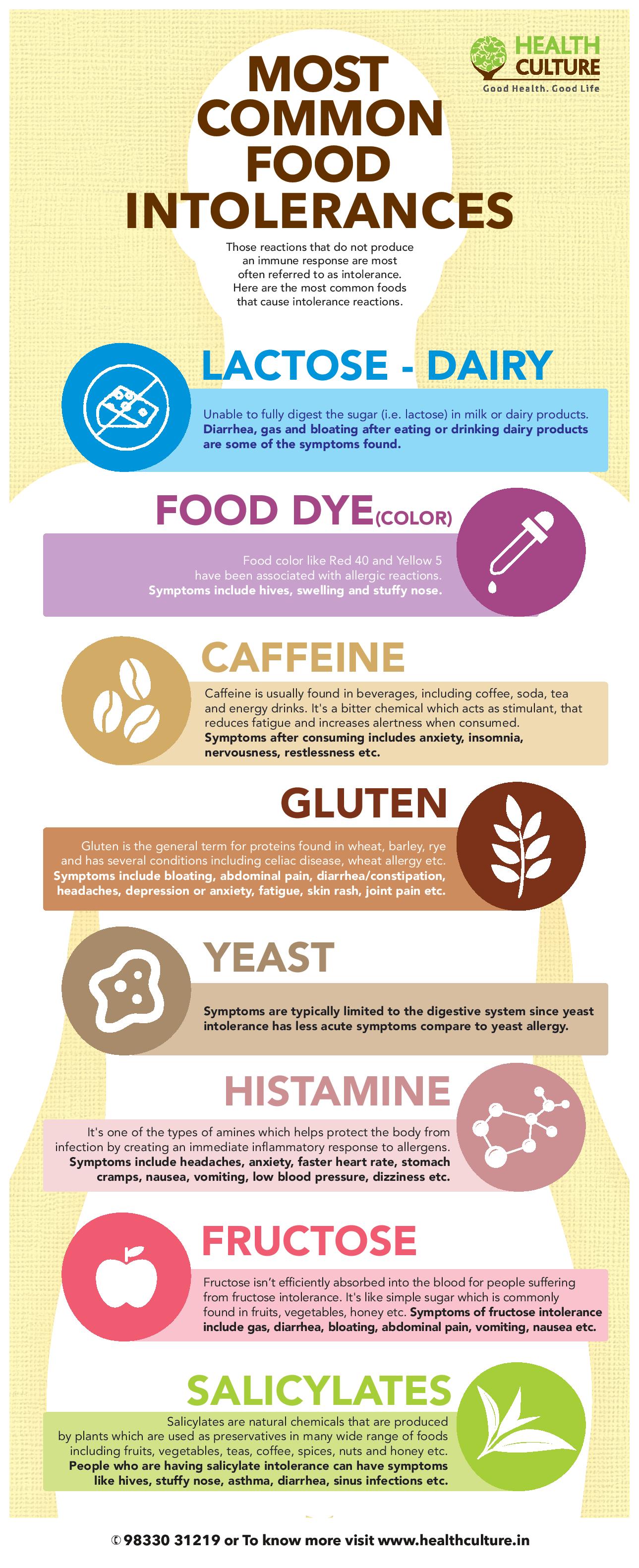Food Allergy, Food Intolerance, Food sensitivity / hypersensitivity, all are terms which sounds similar but confusing at the same time. Even though each terms are often used interchangeably to describe certain food-related problem, there is quite a significant difference. Here are the key differences listed down below.
Definition of Food Allergy & Food Intolerance
A food allergy usually occurs when the body’s immune system sees a certain food as harmful and reacts by causing different symptoms. This is also known as allergic food reaction. Food allergies are reaction to food proteins.
A food intolerance occurs when the body’s digestive system finds difficulty in digesting certain foods which can make the person feel extremely unwell. The abnormality in the body’s ability to absorb nutrients is one of the likely reasons for food intolerance.
Food Allergy: Immediate – Response Allergy [Allergic Reaction]
Immunoglobulin E (Type – IgE reaction) happens if you have an allergy, and your immune system overreacts to an allergen (a protein that causes a food allergy) by producing antibodies (Antibodies are proteins made by the immune system to fight antigens, such as bacteria, viruses, and toxins).
Reason why food allergic reaction happens because body mistakenly sees food as a threat. And those antibodies are being produced to fight off that threat.
Such a food allergy produces an immediate adverse reaction; i.e. within seconds or minutes after ingestion of certain foods (for example peanuts and shellfish) and produces symptoms such as rashes, sneezing, difficulty in breathing, and for some people can even be life threatening because of an anaphylactic shock. It is usually obvious which foods are responsible for a food allergy and these have to be avoided for the rest of your life.
Food Intolerance: Delayed Allergic Reaction
Food intolerance is all about how the immune system of your body fight against foreign substances (when certain, incompletely digested food particles enter your bloodstream and are treated as foreign substances), such as poisons and harmful bacteria reacts to certain foods. This results in your immune system producing tailor-made antibodies (IgG), which attack the food. It’s important to know that IgG antibodies signify exposure to products & not allergy hence it’s known as IgG mediated reaction [Immunoglobulin G]. IgG antibodies to food are commonly detectable in healthy adult patients and children. The onset of symptoms is within hours or days after ingestion of the food. The good news is that with a food intolerance, it is possible to eliminate the food from the diet for a period of time and then to re-introduce them gradually back into the diet after an improvement in symptoms.
What’s the difference between food allergies symptoms and food intolerance symptoms?
Food intolerance and food allergy often tend to have similar symptoms and it can be difficult to make proper diagnosis. In the past doctors often use to look for symptom pattern of a patient by having them use certain food, or use an elimination diet to decipher what food is causing the intolerance, and then avoid that particular food. But that was more of trial and error basis & the results were not exactly fast and accurate. Now doctors conduct blood tests to measure the antibodies or IgE levels in the blood, and give accurate, more reliable results.
Check out this small video about the difference between food allergies and intolerance.
Allergic symptoms can come in a wide range of forms.
Symptoms of food allergies are:
- Rash
- Hives
- Nausea
- Vomiting
- Fainting / Dizziness
- Difficulty swallowing
- Rough voice
- Repetitive cough
- Runny or congested nose
- Diarrhea
- Abdominal pain, and/or stomach cramps
- Itching – Mouth, lips, tongue, throat, eyes, skin, or other areas
- Swelling – Lips, tongue, eyelids, or the whole face
- Wheezing or shortness of breath
- Shock or circulatory collapse
- Weak pulse
- Anaphylaxis, it’s a potential life-threatening reaction that can impair breathing and send the body into shock; reactions may simultaneously affect different parts of the body.
Symptoms of food intolerance are:
- Hives
- Skin rashes
- Anxiety
- Depression
- Headaches / Migraines
- Fatigue
- Hypertension
- Eczema [patches of skin become rough and inflamed with blisters which cause itching and bleeding]
- Hypothyroidism [abnormally low activity of the thyroid gland, resulting in retardation of growth and mental development in children and adults]
- Asthma
- Joint pain
- Chronic rhinitis [runny nose, nasal itching, nasal congestion, and sneezing]
- Arthritis
- Weight problems
- Fibromyalgia [causes bodily pain and mental distress]
- Angioedema [swelling caused by fluid in deeper layers of the skin]
- Dermatitis [skin becomes red, swollen, and sore, sometimes with small blisters]
- Anaphylaxis
- Respiratory tract – Nasal congestion, asthma, rough cough, sinusitis, pharyngeal irritations.
- Gastrointestinal tract (GIT) – Irritable Bowel Syndrome (IBS), nausea, gas, diarrhea, constipation, abdominal cramp.
Diagnostic treatment on food allergy and food intolerance
Food reactions differ for every patients and the symptoms vary on how the body reacts to that particular food. Since most of the symptoms tend to be similar it’s particularly hard to categorize if it’s allergic reaction to food or non-allergic reaction to food. Here is some of the diagnostic treatment listed down below.
Diagnosis on Food Allergy:
Food diagnosis is usually based on patients medical history & then following diagnosis is done.
Here are the main diagnosis:
Elimination diet
Skin-prick testing
Patch testing
Blood testing
All the above are for food-specific IgE antibodies.
Oral food challenge needs to be assessed by an allergist. They will review the patient’s medical history and the symptoms or reactions that have been noted after food ingestion. If the symptoms or reactions of food allergy are recurring, the patient will undergo this allergy test.
Diagnosis on Food Intolerance:
Non-IgE-mediated intolerance are more difficult to diagnose than allergy because the symptoms in food intolerance take much longer to appear than food allergies. And in such cases, doctors or dietician advises patients to maintain a diary and note down which foods are eaten, and when that particular symptom appeared. Since food intolerance symptoms take longer time to appear, the data in the diary can help identify which foods are causing adverse reactions, and what necessary steps need to taken.
Here are the main diagnosis:
Skin prick tests will help to identify the fact that the symptom occurred due to food allergy and not cause of intolerance.
Apart from hydrogen breath testing for Lactose intolerance,
Coeliac Disease (also written as celiac disease, is a autoimmune disorder that primarily affects the small intestine),
ELISA testing (test that detects and measures antibodies in your blood)for IgG-mediated immune responses to specific foods.
But other than this to identify food intolerance there is no accurate, reliable test. So blood test and elimination / diagnostic diet is the one of the best way to help tackle food intolerance issue.
Most Common Food Allergies:

Most Common Food Intolerance:

Quick Summary –

If the patient has a food allergy, they cannot tolerate even small amounts of the allergen, even if the food was prepared in an environment which contained the allergen, or food (eg. maybe a tiny amount of peanut) that they are allergic to. They will have adverse reaction.
If the patient has a food intolerance, they can eat a very small quantity of the food with no adverse reaction.
Conclusion:
For food intolerance the currently best treatment is to either avoid certain foods or eat less / smaller amounts along with medication.
Many times food allergic reactions are inconsistent, and since the symptoms are similar, we might tend to assume as food intolerance, which can lead to more severe food allergic reaction.
Therefore, the only option is to avoid that particular food for the rest of the life if diagnosed with food allergy.
At Health Culture, we provide service treatment for both food intolerance and food allergy.
